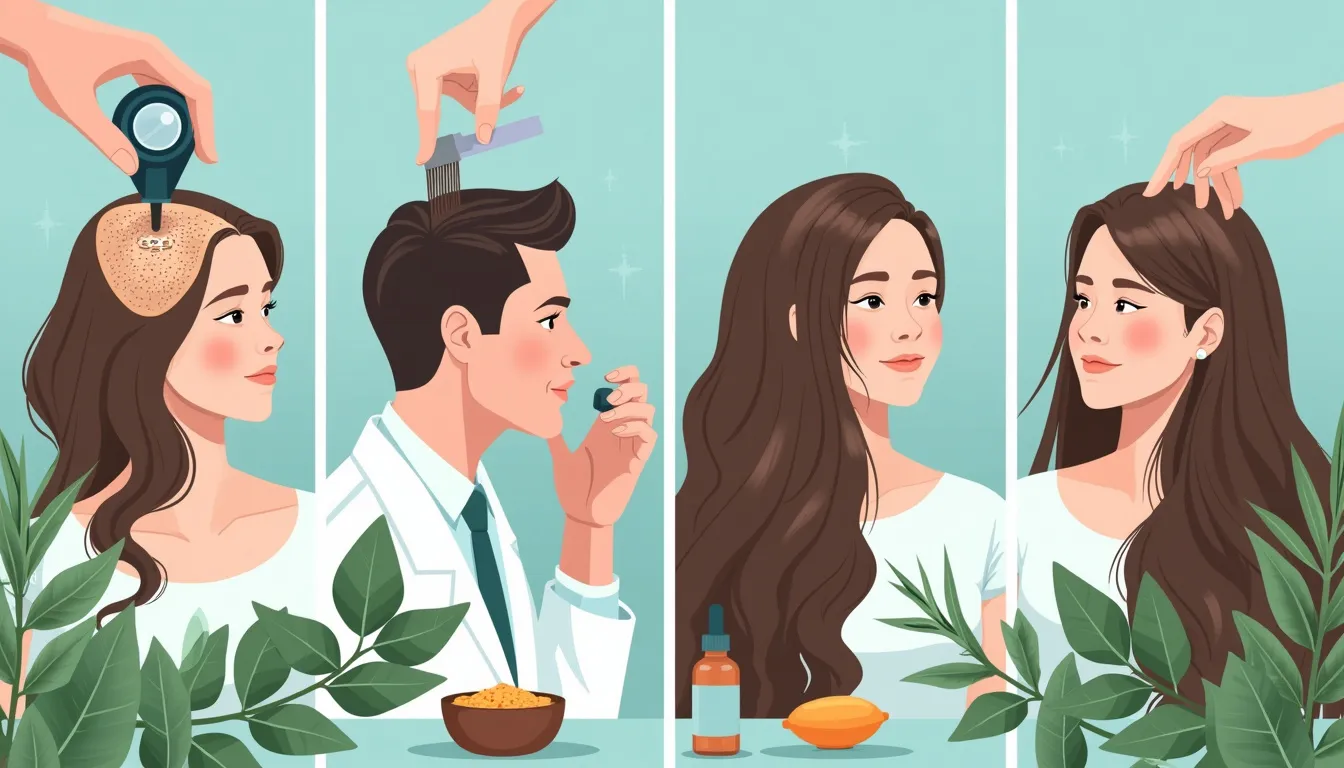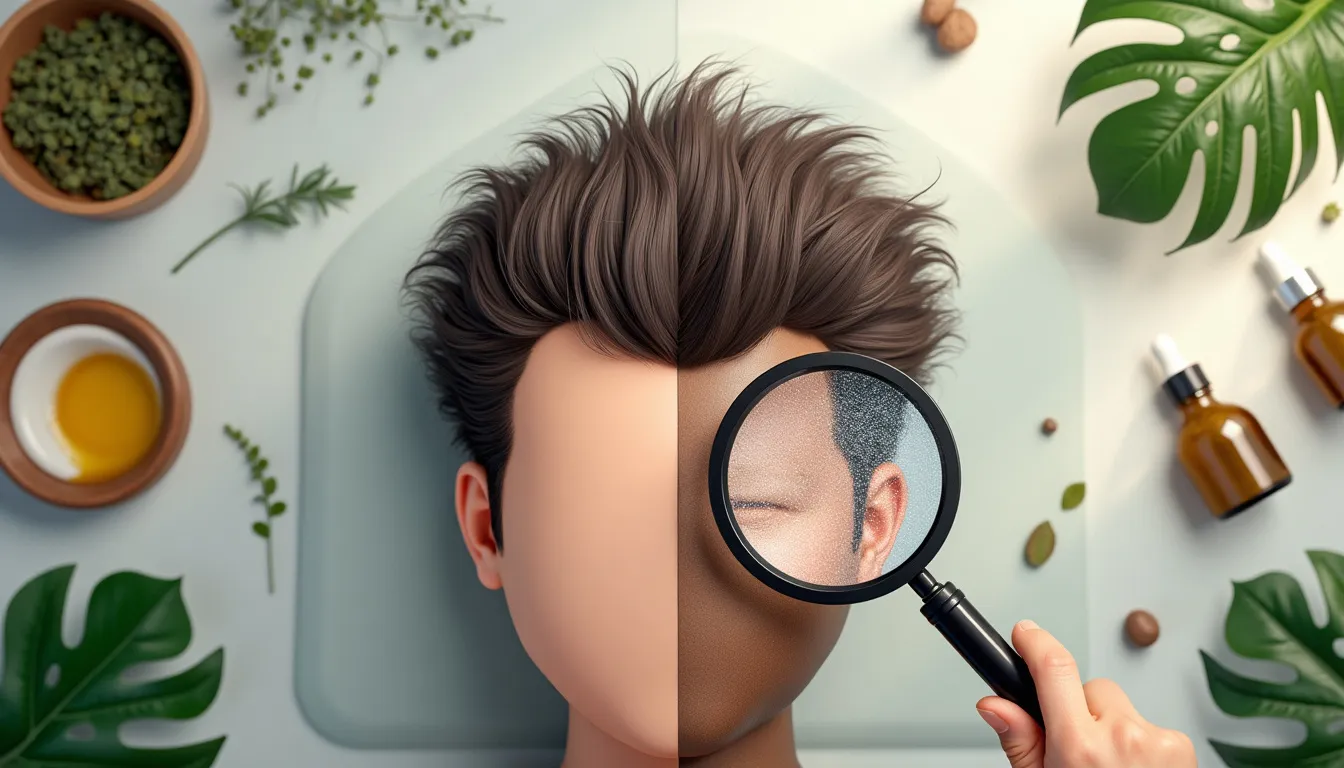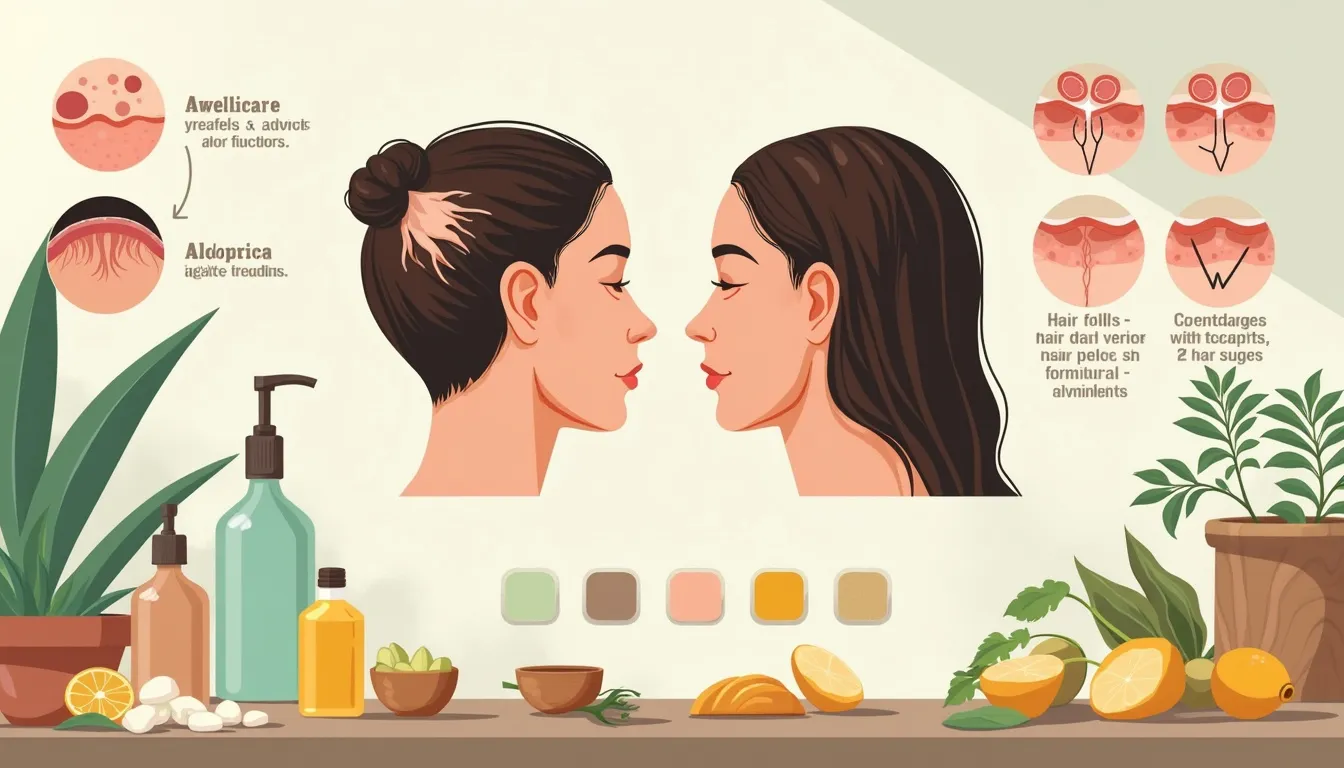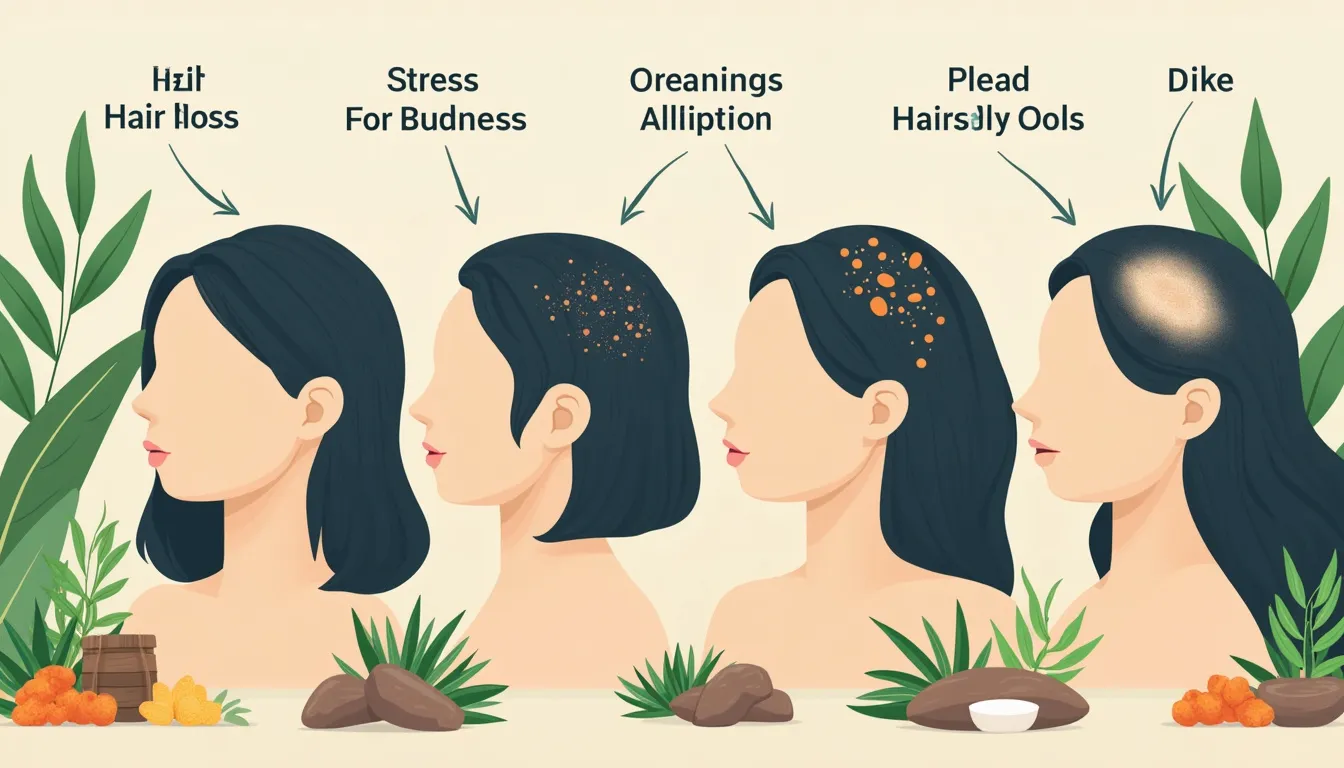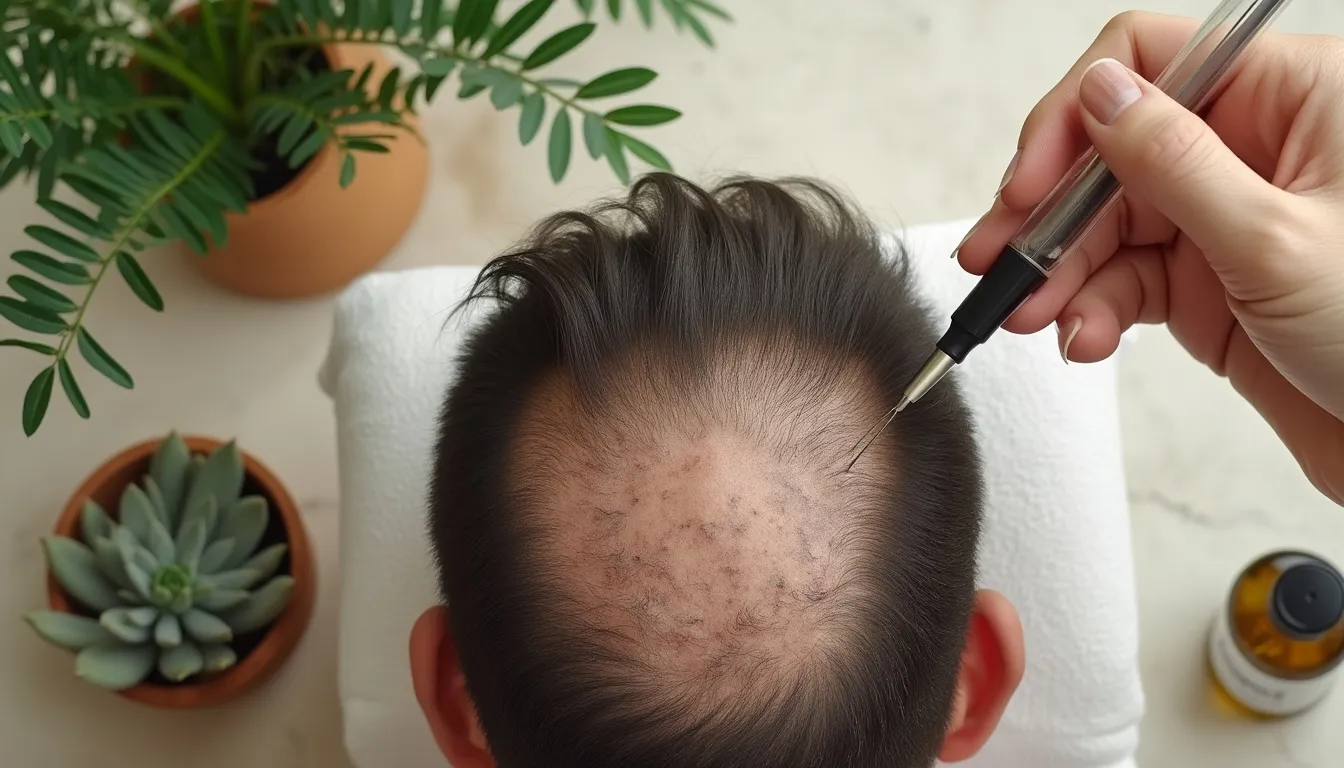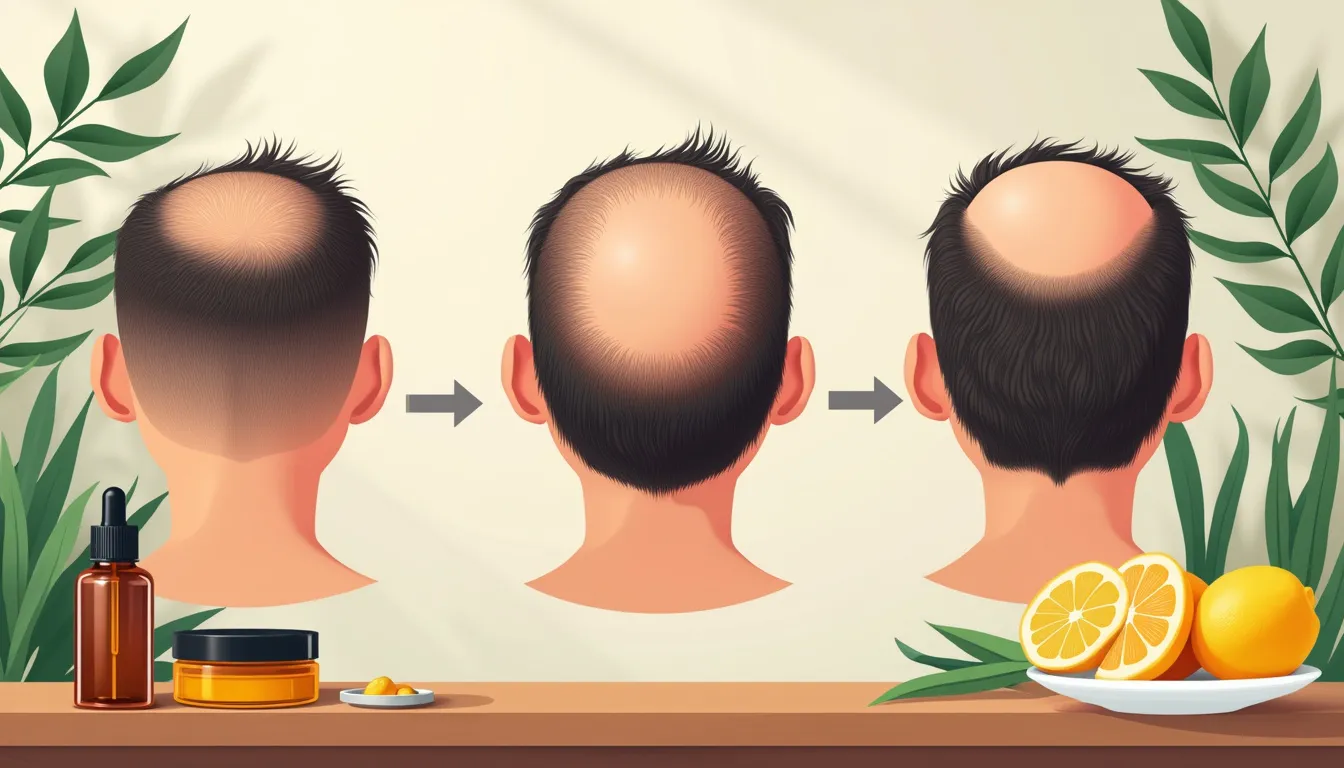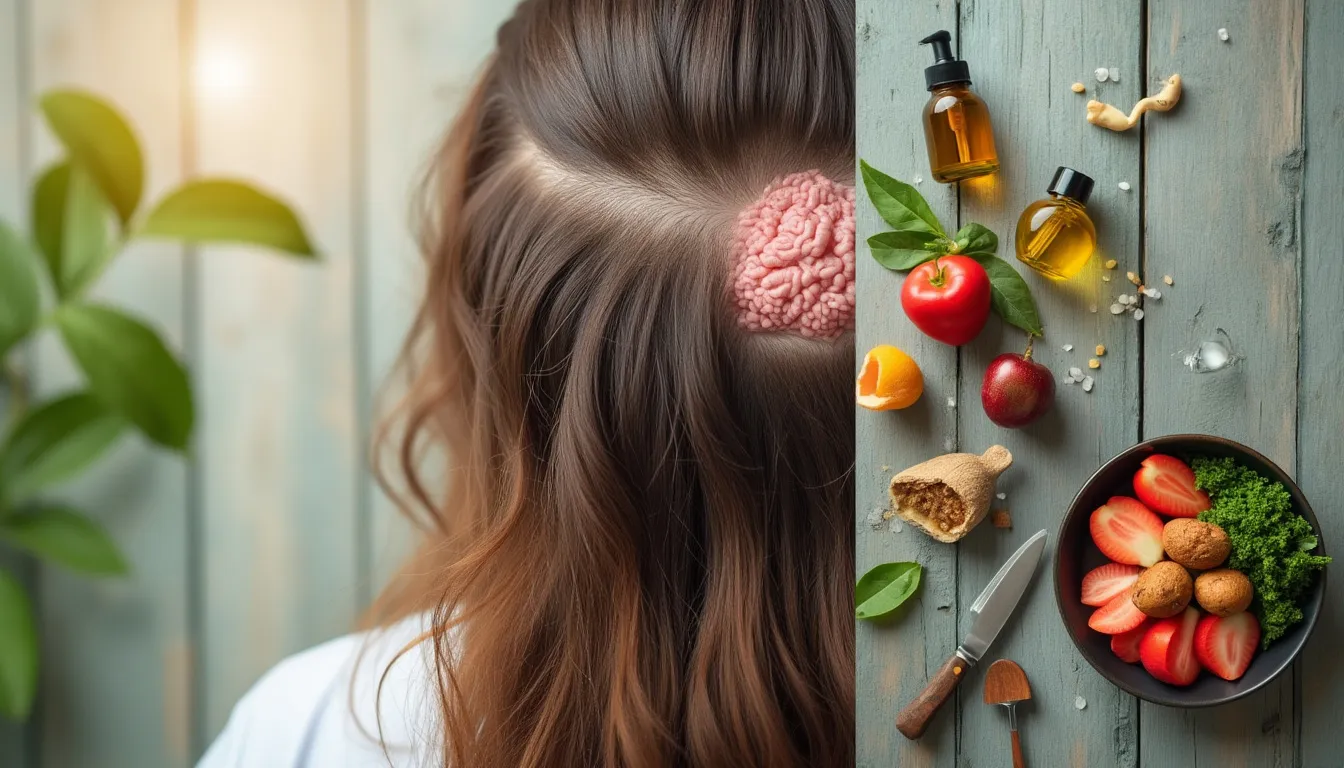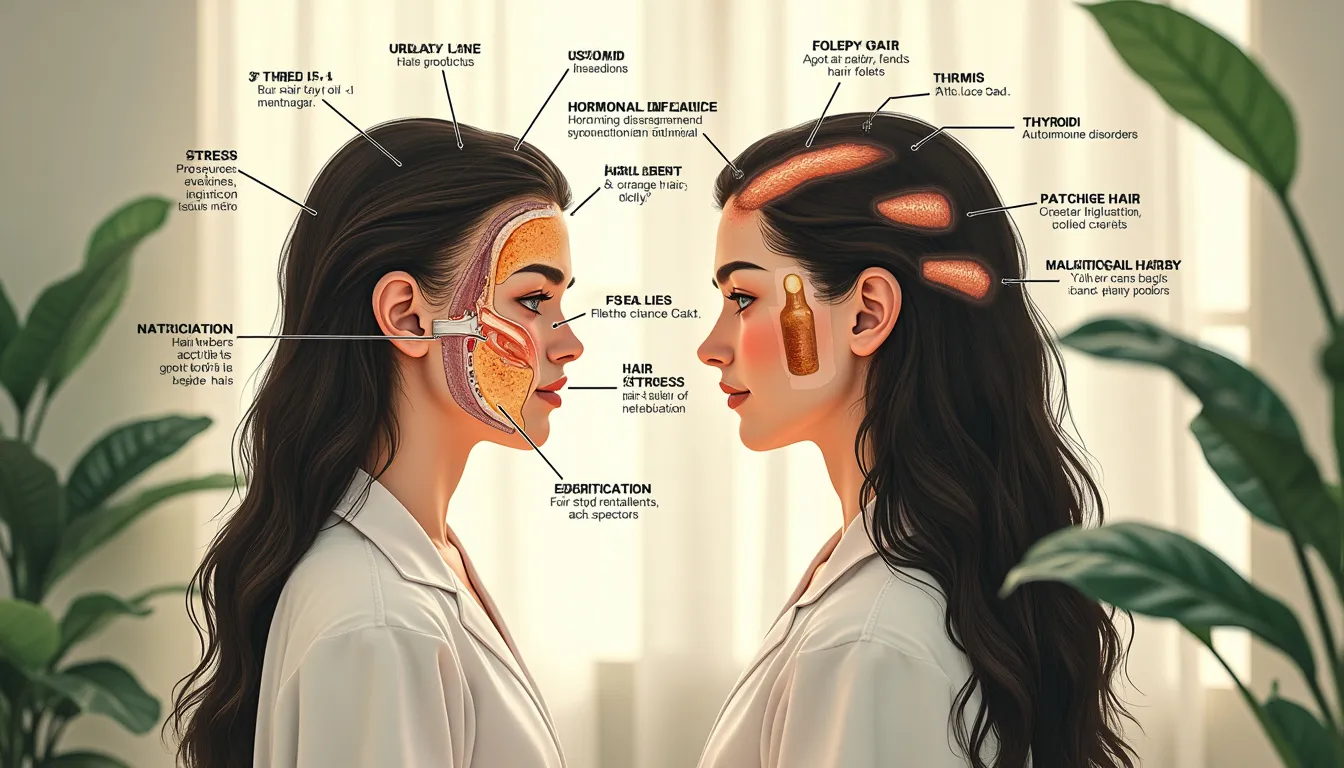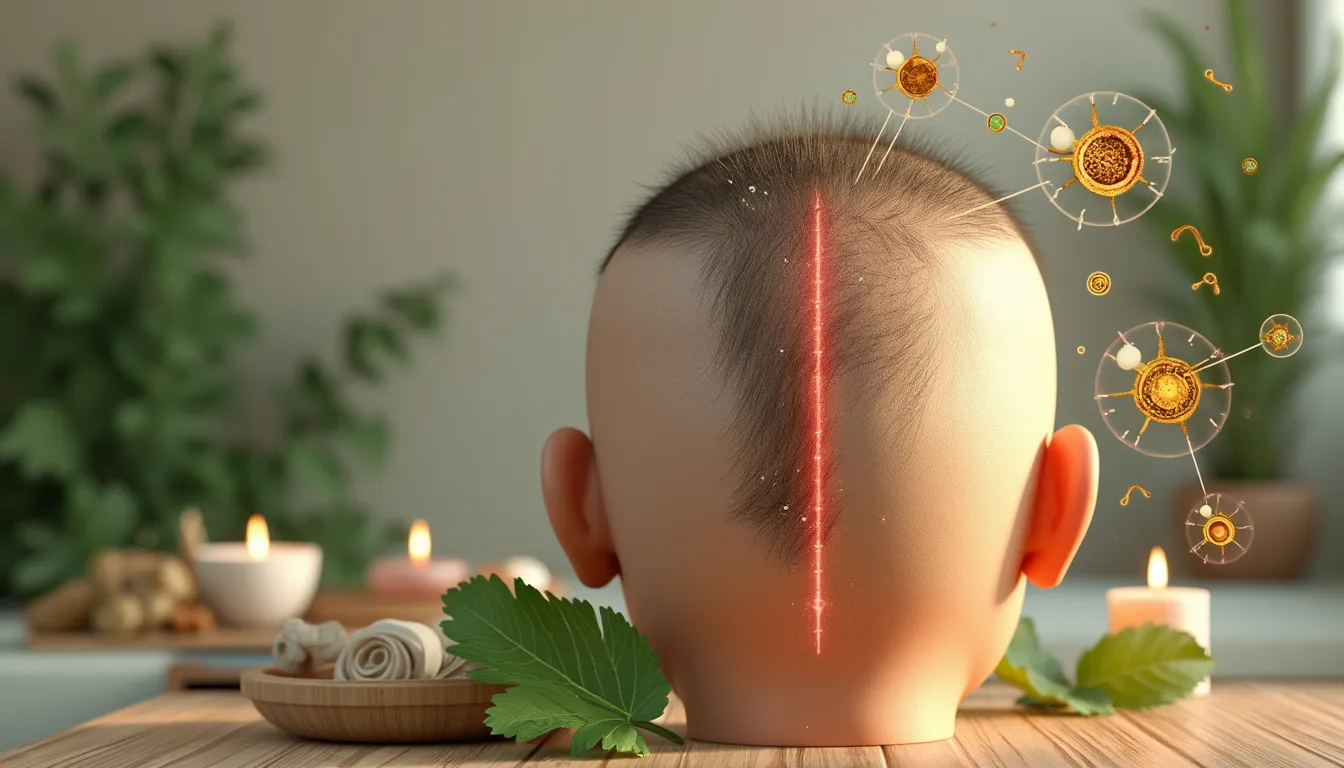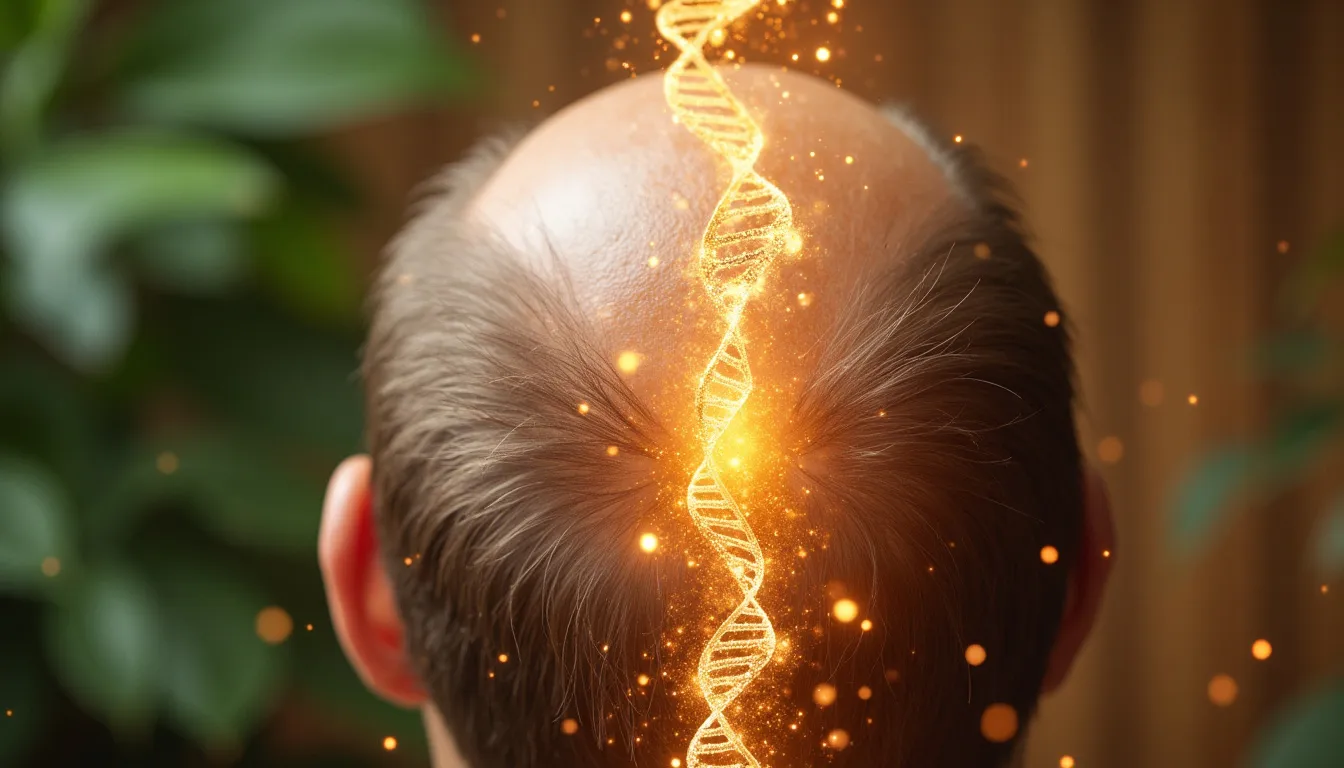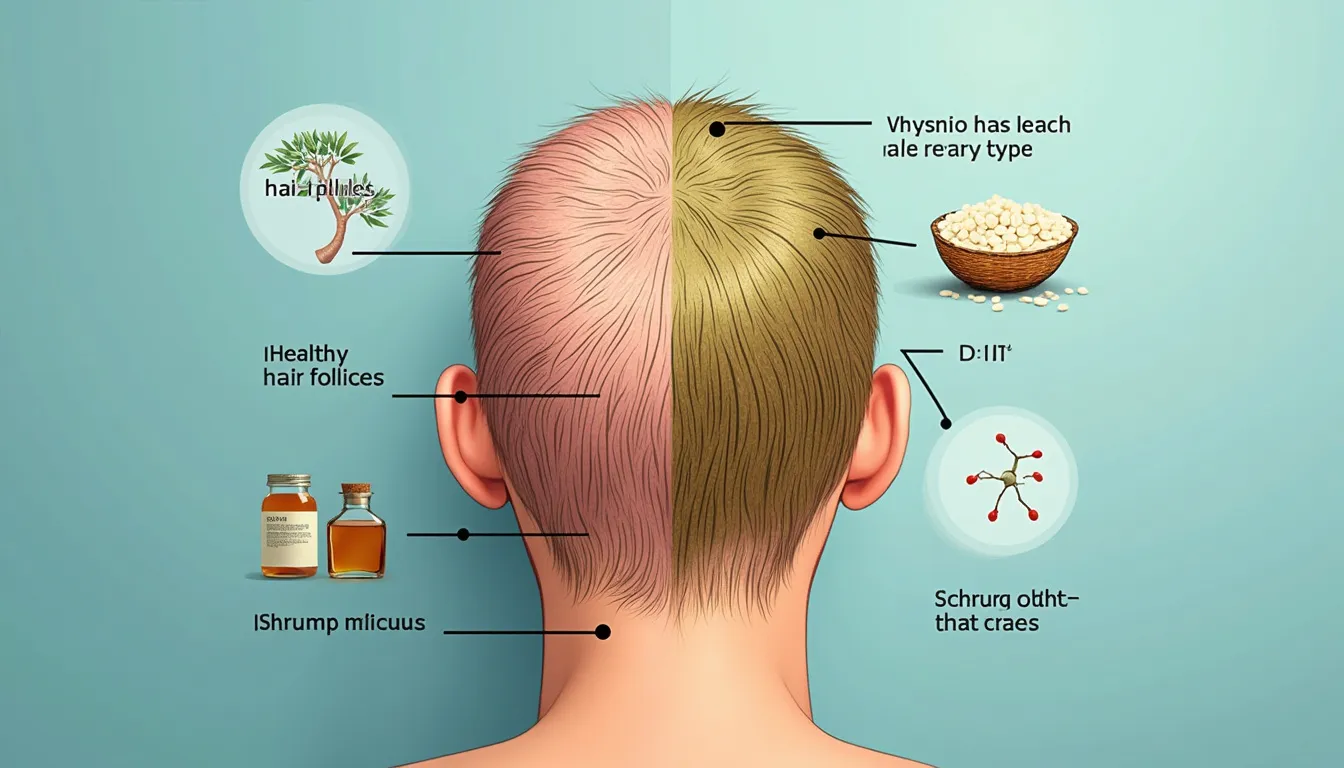Are you tired of looking in the mirror and seeing limp, lifeless hair staring back at you? You’re not alone. Thinning hair is a common concern for many, affecting both men and women of all ages. But don’t despair – there’s hope for achieving the luscious, voluminous locks you’ve always dreamed of. In this comprehensive guide, we’ll explore five effective hair thickening techniques that can transform your tresses from flat to fabulous. Whether you’re dealing with age-related hair loss, stress-induced thinning, or simply want to add more body to your hair, these methods can help you achieve fuller, more vibrant locks. From natural remedies and specialized hair care products to cutting-edge professional treatments, we’ll cover a range of options to suit every preference and budget. Get ready to say goodbye to thin, lackluster hair and hello to a fuller, more confident you. Let’s dive into the world of hair thickening and discover the secrets to achieving the voluminous mane you’ve always wanted.
Natural Hair Thickening Methods
When it comes to achieving thicker, fuller hair, nature often provides the best solutions. Natural hair thickening methods not only promote healthier hair growth but also nourish your scalp and existing strands. Let’s explore some effective techniques that can help you achieve the luscious locks you’ve always dreamed of.
Scalp Massage and Stimulation
One of the simplest yet most effective natural hair thickening methods is scalp massage. This age-old technique increases blood flow to your hair follicles, promoting better nutrient delivery and encouraging hair growth. Here’s how to incorporate scalp massage into your routine:
- Use your fingertips to gently massage your scalp in circular motions for 5-10 minutes daily
- Try using a scalp massager tool for added stimulation
- Combine massage with hair oils for enhanced benefits
Regular scalp massage can also help reduce stress, which is a known contributor to hair loss. Studies have shown that scalp massage can increase hair thickness by stretching the cells of hair follicles, stimulating them to produce thicker hair.
Nutrient-Rich Diet for Hair Growth
You’ve probably heard the saying, You are what you eat. This applies to your hair as well. A nutrient-rich diet is crucial for promoting hair thickening and overall hair health. Here are some key nutrients and foods to include in your diet:
- Protein: Your hair is primarily made of protein, so ensure you’re getting enough from sources like lean meats, fish, eggs, and legumes
- Biotin: This B-vitamin is essential for hair growth. Find it in foods like nuts, seeds, sweet potatoes, and eggs
- Iron: Iron deficiency can lead to hair loss. Incorporate iron-rich foods like spinach, lentils, and red meat into your diet
- Omega-3 fatty acids: These healthy fats nourish hair follicles. Eat fatty fish, flaxseeds, and chia seeds
- Vitamins A and C: These vitamins promote sebum production and collagen, respectively. Consume plenty of colorful fruits and vegetables
Remember, a balanced diet not only supports hair thickening but also improves overall health. If you’re concerned about nutrient deficiencies, consult with a healthcare professional about potential supplements.
Essential Oils for Hair Thickening
Essential oils have been used for centuries in hair care, and for good reason. Many essential oils have properties that can stimulate hair growth, improve scalp health, and even make your hair appear thicker. Here are some of the best essential oils for hair thickening:
- Rosemary oil: Studies have shown that rosemary oil can be as effective as minoxidil in promoting hair growth
- Peppermint oil: This oil can increase circulation to the scalp and may stimulate hair growth
- Lavender oil: Known for its stress-reducing properties, lavender oil may also help with hair growth
- Cedarwood oil: This oil can help balance oil-producing glands in the scalp
- Thyme oil: Thyme is believed to help with hair growth and prevent hair loss
To use essential oils for hair thickening, mix a few drops with a carrier oil like coconut or jojoba oil. Massage this mixture into your scalp and leave it on for at least 30 minutes before washing. Always do a patch test before applying essential oils to ensure you don’t have any adverse reactions.
While these natural hair thickening methods can be highly effective, it’s important to remember that consistency is key. Hair growth cycles take time, so be patient and persistent with your chosen methods. Additionally, if you’re experiencing significant hair loss or thinning, it’s always a good idea to consult with a dermatologist or trichologist to rule out any underlying health issues.
For those looking for a comprehensive approach to hair thickening and loss prevention, consider checking out the Fortify program. This program combines various strategies to help stop hair loss and promote thicker, healthier hair.
Remember, everyone’s hair is unique, and what works for one person may not work for another. Don’t be afraid to experiment with different natural hair thickening methods to find what works best for you. With patience and the right approach, you can achieve the fuller, thicker hair you’ve always wanted.

Hair Care Products for Thicker Hair
When it comes to achieving thicker, fuller-looking hair, the right hair care products can make a world of difference. From volumizing shampoos to innovative fiber powders, there’s a wide array of options designed to give your locks that coveted boost. Let’s dive into some of the most effective hair thickening products that can transform your tresses from limp to luscious.
Volumizing Shampoos and Conditioners
The foundation of any hair thickening routine starts in the shower with your choice of shampoo and conditioner. Volumizing formulas are specifically designed to add body and fullness to your hair, making them an essential tool in your quest for thicker locks.
These products work by:
- Removing excess oils and buildup that can weigh hair down
- Coating each strand with lightweight ingredients that create the illusion of thickness
- Infusing hair with proteins and vitamins that strengthen and plump up the hair shaft
When shopping for volumizing shampoos and conditioners, look for ingredients like:
- Panthenol (Vitamin B5): Helps to thicken and strengthen hair
- Biotin: Promotes hair growth and overall hair health
- Keratin: A protein that adds structure and strength to hair
- Rice or wheat proteins: Coat the hair, making it appear thicker
Remember, while using these products, focus on applying conditioner mainly to the ends of your hair to avoid weighing down your roots. This technique helps maintain volume at the crown, where it matters most for the appearance of thicker hair.
Leave-in Thickening Treatments
After washing and conditioning, leave-in treatments can provide an extra boost to your hair thickening efforts. These products are designed to be applied to damp hair and left in as you style, offering continuous benefits throughout the day.
Some popular types of leave-in thickening treatments include:
- Thickening sprays: Lightweight mists that add volume without heaviness
- Mousses: Provide lift and body, especially useful for fine hair
- Creams: Ideal for those with dry or coarse hair who need extra moisture along with thickening benefits
Many of these products contain ingredients like collagen, biotin, and niacinamide, which can help to plump up the hair shaft and improve overall hair health. Some even include heat-protectant properties, making them perfect for those who frequently use hot styling tools.
To get the most out of your leave-in treatment:
- Apply to damp, not soaking wet, hair
- Focus on the roots and mid-lengths for maximum volume
- Use a wide-toothed comb to distribute the product evenly
- Style as usual, using heat if desired to activate any heat-responsive ingredients
Hair Fibers and Powders for Instant Volume
For those seeking an immediate solution to thinning hair or sparse areas, hair fibers and powders can be a game-changer. These innovative products provide instant, dramatic results by creating the illusion of thicker, fuller hair in seconds.
Hair fibers are typically made from keratin proteins that closely match human hair. They work by:
- Statically clinging to existing hair strands
- Filling in gaps and covering thinning areas
- Creating a fuller, more dense appearance overall
Hair powders, on the other hand, often contain ingredients like silica silylate or rice starch. These finely milled powders adhere to the hair and scalp, minimizing the appearance of thinning areas and adding overall volume.
To use hair fibers or powders effectively:
- Start with dry, styled hair
- Shake or sprinkle the product onto areas that need more volume or coverage
- Gently pat or brush to distribute evenly
- Set with a light mist of hairspray for longer-lasting results
While these products offer a quick fix, it’s important to choose ones that match your natural hair color for the most seamless blend. Many brands offer a range of shades, and some even provide custom color-matching services.
It’s worth noting that while hair fibers and powders can create a dramatic improvement in appearance, they are temporary solutions that wash out with shampoo. For those looking for more permanent solutions to hair thinning, it may be worth exploring hair transplant options or consulting with a trichologist.
Incorporating these hair care products into your routine can significantly enhance the appearance of your hair’s thickness and volume. However, for optimal results, it’s crucial to maintain a holistic approach to hair health. This includes a balanced diet rich in hair-nourishing nutrients, proper scalp care, and minimizing heat and chemical damage.
If you’re struggling with persistent hair thinning or loss, it might be time to consider a more comprehensive solution. Programs like Fortify offer tailored approaches to combat hair loss and promote thicker, healthier hair growth. Remember, everyone’s hair is unique, so what works for one person may not work for another. Don’t be afraid to experiment with different products and techniques to find the perfect hair thickening routine for you.
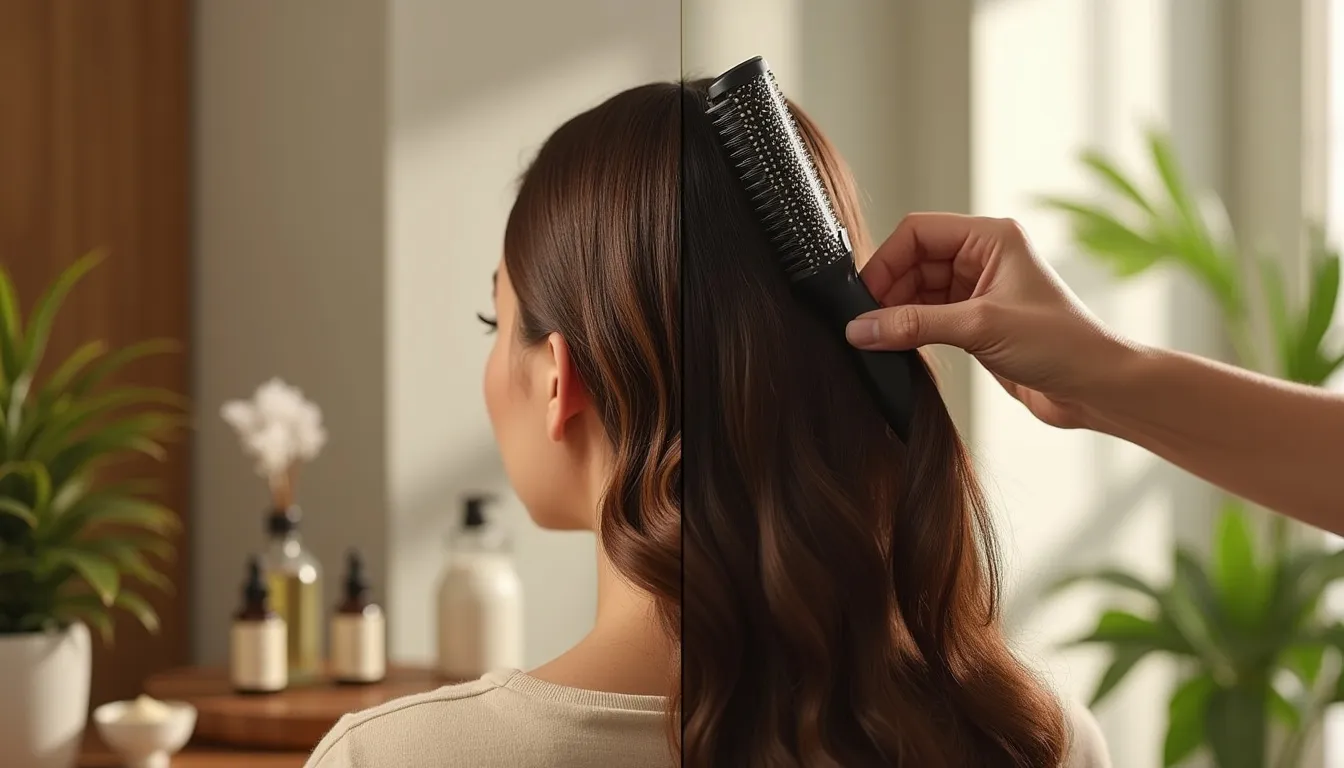
3. Professional Hair Thickening Treatments
When natural methods and over-the-counter products don’t quite cut it, professional hair thickening treatments can provide more dramatic and long-lasting results. These advanced techniques, performed by trained specialists, can help you achieve the fuller, thicker locks you’ve been dreaming of. Let’s explore some of the most effective professional hair thickening treatments available today.
Hair Extensions and Integrations
Hair extensions and integrations are popular choices for those seeking an immediate boost in hair volume and length. These techniques involve adding synthetic or natural hair to your existing locks, creating a fuller appearance.
- Clip-in extensions: These temporary extensions can be easily attached and removed at home, making them perfect for special occasions or daily use.
- Tape-in extensions: Applied by a professional, these extensions are attached using special adhesive tape and can last up to 8 weeks with proper care.
- Sew-in extensions: Also known as weaves, these extensions are sewn into small braids of your natural hair, providing a more permanent solution.
- Micro-link extensions: These individual strands are attached to your natural hair using tiny beads or links, offering a seamless and natural-looking result.
While extensions can provide instant gratification, it’s essential to choose a reputable stylist and high-quality hair to avoid damage to your natural locks. Regular maintenance and proper care are crucial for keeping your extensions looking their best.
Scalp Micropigmentation
Scalp micropigmentation (SMP) is an innovative cosmetic procedure that creates the illusion of fuller hair by tattooing pigment into the scalp. This technique is particularly effective for those with thinning hair or baldness, as it can:
- Camouflage areas of hair loss
- Create the appearance of a fuller hairline
- Blend with existing hair for a natural look
- Provide a long-lasting solution with minimal maintenance
The process involves using specialized equipment to deposit pigment into the dermal layer of the scalp, creating tiny dots that mimic the appearance of hair follicles. The result is a subtle, natural-looking shadow that gives the impression of thicker hair or a closely-shaved head.
While SMP is a semi-permanent solution, touch-ups may be needed every few years to maintain the desired effect. It’s crucial to choose a skilled and experienced practitioner for this procedure to ensure the best possible results.
PRP (Platelet-Rich Plasma) Therapy for Hair Growth
PRP therapy is a cutting-edge treatment that harnesses the power of your body’s own healing mechanisms to stimulate hair growth. This minimally invasive procedure involves:
- Drawing a small amount of blood from the patient
- Processing the blood to isolate platelet-rich plasma
- Injecting the PRP into specific areas of the scalp
The concentrated platelets in PRP contain growth factors that can:
- Stimulate dormant hair follicles
- Increase blood flow to the scalp
- Promote thicker, stronger hair growth
- Improve overall hair density
PRP therapy is generally recommended as a series of treatments, with maintenance sessions every 6-12 months. While results can vary, many patients report noticeable improvements in hair thickness and density within 3-6 months of starting treatment.
It’s worth noting that PRP therapy is most effective for those in the early stages of hair loss or thinning. For more advanced cases, it may be combined with other treatments for optimal results.
Choosing the Right Professional Treatment
When considering professional hair thickening treatments, it’s essential to consult with a qualified specialist who can assess your individual needs and recommend the most suitable option. Factors to consider include:
- The extent of your hair thinning or loss
- Your desired outcome
- Your budget and time commitment
- Any underlying health conditions that may affect treatment
Remember, while these professional treatments can provide impressive results, they work best when combined with a healthy lifestyle and proper hair care routine. Maintaining a balanced diet, managing stress, and using quality hair products can all contribute to the overall health and appearance of your hair.
For those looking to explore additional options for combating hair loss, the Fortify program offers a comprehensive approach to hair restoration and maintenance. This program combines cutting-edge treatments with personalized care to help you achieve and maintain thicker, healthier hair.
In conclusion, professional hair thickening treatments offer a range of options for those seeking more dramatic results in their quest for fuller locks. Whether you opt for extensions, scalp micropigmentation, PRP therapy, or a combination of treatments, working with a skilled professional can help you achieve the luscious, voluminous hair you’ve always wanted.
In conclusion, achieving thicker, fuller hair is a journey that combines various techniques and approaches. From natural methods like scalp massage and a nutrient-rich diet to specialized hair care products and professional treatments, there are numerous ways to enhance your hair’s volume and appearance. It’s important to remember that what works best for one person may not be as effective for another, so don’t be afraid to experiment with different hair thickening techniques to find your perfect combination.
While these methods can significantly improve the look and feel of your hair, it’s crucial to address any underlying causes of hair thinning or loss. Consulting with a dermatologist or trichologist can provide valuable insights into your specific hair concerns and help you develop a tailored approach to hair thickening.
Ultimately, patience and consistency are key when it comes to hair thickening. Many of these techniques require time to show noticeable results, so stick with your chosen methods and give them a chance to work their magic. Remember, healthy hair starts from within, so maintaining a balanced lifestyle, managing stress, and prioritizing overall wellness will contribute to your hair’s vitality.
By incorporating a combination of these effective hair thickening techniques into your routine, you’ll be well on your way to achieving the fuller, more voluminous locks you desire. Embrace the process, and enjoy the journey to healthier, thicker hair that boosts your confidence and enhances your natural beauty.
If you’re looking for additional support in your hair thickening journey, consider exploring specialized programs designed to combat hair loss and promote fuller hair. One such program is Fortify, which you can learn more about at hairsecurity.net/fortify. With the right approach and dedication, you can transform your hair and enjoy the luscious locks you’ve always wanted.


